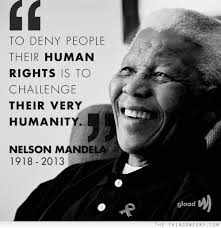Specific instruments on indigenous peoples’ rights
The UN Declaration on the Rights of Indigenous Peoples, UNDRIP
Adopted in 2007, the UNDRIP recognizes the wide range of basic human rights and fundamental freedoms of indigenous peoples such as the right to unrestricted self-determination and inalienable and collective land and resource right. It also establishes guarantees against ethnocide and genocide.
ILO Convention No. 169 on Indigenous Peoples
Adopted in 1989, it reflects changes in the position of indigenous and tribal populations and greater understanding of their position by governments, employers and workers.
- Read more about the ILO Convention 169 on the website of ILO here.
- See the list of countries that have ratified the Convention here.
ILO Convention No. 107 of 1957 concerning Indigenous and Tribal Populations
In 1957, the ILO adopted convention 107 to be applied to indigenous and tribal populations in independent countries and aimed at protecting these peoples against abuses. In 1989, the revised version; ILO Convention 169 was adopted
Other human rights instruments of importance to indigenous peoples
- International Covenant on Civil and Political Rights (ICCPR)
ICCPR is based on the Universal Declaration of Human Rights and was adopted by the UN General Assembly in 1966. The Human Rights Committee is the body of independent experts that monitors implementation of the International Covenant on Civil and Political Rights by its State parties. The list of countries that have ratified the Covenant can be found here. - International Covenant on Economic, Social and Cultural Rights (ICESCR)
ICESCR was adopted by the UN General Assembly in 1966. It commits states parties to promote and protect a wide range of economic, social and cultural rights, including rights relating to work in just and favourable conditions, to social protection, to an adequate standard of living, to education and to enjoyment of the benefits of cultural freedom and scientific progress. The implementation of CESCR by its States parties is monitored by the Committee on Economic, Social and Cultural Rights (CESCR), which is a body of independent experts. The list of countries that have ratified the Covenant can be foundhere. - International Convention on the Elimination of all Forms of Racial Discrimination (ICERD)
ICERD was adopted in 1963 by the UN General Assembly. TheCommittee on the Elimination of Racial Discrimination (CERD) is the body of independent experts that monitors implementation of the Convention on the Elimination of All Forms of Racial Discrimination by its State parties. The list of countries that have ratified the Convention can be found here. - Convention on the Rights of the Child (CRC)
CRC was adopted by the UN General Assembly in 1989. TheCommittee on the Rights of the Child (CRC) is the body of independent experts that monitors implementation of the Convention on the Rights of the Child by its State parties. The list of countries that have ratified the Convention can be found here. - Convention on the Elimination of All Forms of Discrimination against Women (CEDAW)
CEDAW was adopted by the UN General Assembly in 1979. The Convention is often described as an international bill of rights for women. Consisting of a preamble and 30 articles, it defines what constitutes discrimination against women and sets up an agenda for national action to end such discrimination. The Committee on the Elimination of Discrimination against Women (CEDAW) watches over the progress for women made in those countries that are the States parties to the Convention. The list of countries that have ratified the Convention can be found here. Forest Peoples Programme has developed a guide that gives indigenous women guidance on how to make use of the various procedures offered by the Convention. The guide can be found here. - Convention against Torture and Other Cruel, Inhuman or Degrading Treatment or Punishment
The Convention was adopted by the UN General Assembly in 1984. The Committee Against Torture (CAT) is the body of independent experts that monitors implementation of the Convention by its State parties. - Convention on the Prevention and Punishment of the Crime of Genocide
The Convention was approved by the UN General Assembly in 1948.
Other conventions:
- Convention on Biological Diversity
The UN Convention on Biological Diversity (CBD) was finally negotiated at the Earth Summit in Rio de Janeiro in 1992. It deals with the conservation and sustainable use of biodiversity, and with access to biological diversity and sharing of the benefits arising from this access. The CBD’s decision-making body is the Conference of Parties (COP). The list of countries that have ratified the Convention can be found here. Read more about the Convention on Biological Diversity on IWGIA’s website here. - Convention on International Trade in Endangered Species of Wild Flora and Fauna (CITES)
CITES entered into force in 1975. It is an international agreement between Governments. Its aim is to ensure that international trade in specimens of wild animals and plants does not threaten their survival. The list of contracting parties can be found here.
http://www.iwgia.org/human-rights/international-human-rights-instruments

